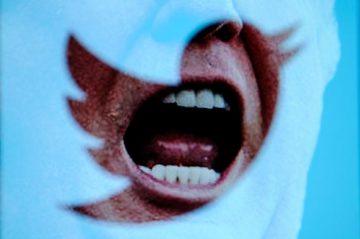Gary Stix in Scientific American:
 In recent years, Jack Grieve of the department of English and linguistics at the University of Birmingham in England has embraced Twitter as a bountiful lode for looking at language-use patterns. One of his projects examined the regional popularity of profanity in the U.S. (“crap” is big in the center of the country; “f—” turns up more on the coasts). Another study he conducted looked for new word usages spreading on American social media (“baeless” for single, for example, and “senpai” for elder or expert).
In recent years, Jack Grieve of the department of English and linguistics at the University of Birmingham in England has embraced Twitter as a bountiful lode for looking at language-use patterns. One of his projects examined the regional popularity of profanity in the U.S. (“crap” is big in the center of the country; “f—” turns up more on the coasts). Another study he conducted looked for new word usages spreading on American social media (“baeless” for single, for example, and “senpai” for elder or expert).
Now Grieve and his linguist colleague Isobelle Clarke have turned their analytic expertise to President Donald Trump’s Twitter account. A study published Wednesday in PLOS One shows how the linguistic style of Trump’s 21,739 tweets from mid-2009 to early 2018 (excluding retweets) morphed as his strategy for reaching multitudes of followers changed. (“Linguistic style” here refers to the form of the text, not its meaning.) The researchers categorized the different styles by scrutinizing the tweets’ grammatical structure. Some of them were merely conversational. Others dispensed advice or campaign rhetoric or simply signaled Trump’s engagement on a particular issue. One tweet style transmuted into another—and then sometimes back—as Trump progressed from his role as peddler of a fake “birther” conspiracy theory to improbable presidential primary candidate to Republican nominee—and then to occupier of the Oval Office. (Such “style shifting”—how an individual’s language varies from one situation to another—is a subdiscipline in linguistics.)
…The amount of free media coverage the account generated during the campaign is well documented. We also know it was a big part of how Trump and his campaign chose to communicate with the public. And we know they won. So our aim was to describe how they used Twitter from a linguistic perspective—not to understand if it was effective but to understand why it was effective. And I think we show there was an underlying strategy—that they were shifting the styles of their tweets to achieve certain communicative goals.
More here.
